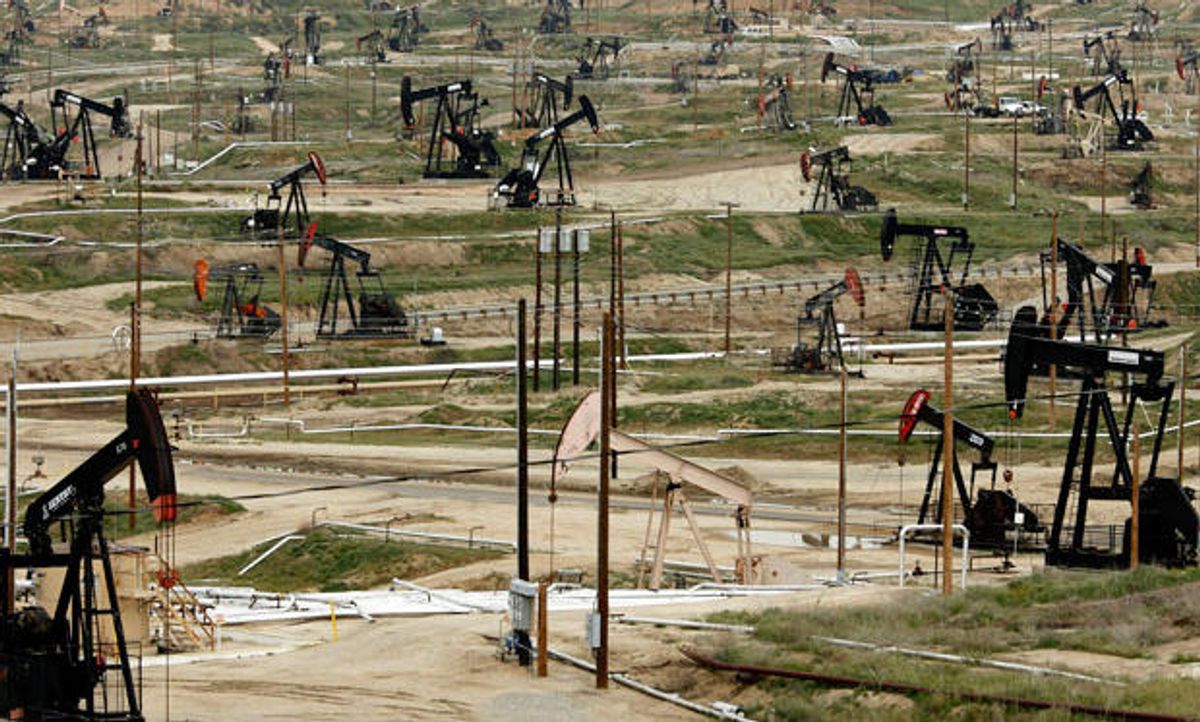Oil's availability is of course of immediate concern to every driver, especially at a time when gasoline prices are high once again. The much greater concern, however, is whether we are reaching a limit where oil can no longer be recovered at prices consumers are willing to pay.
If something like that turns out to be true—a scenario that generally goes by the name of "peak oil"—then long-term economic growth may be constrained across the industrial world. At the same time, to look at the brighter side of the picture, long-term carbon emissions may be lower than previously projected.
As it happens, expert opinion is radically divided on this key issue.
A recent report from analysts at Lux Research, "Evaluating New EOR [Enhanced Oil Recovery] Technologies in Oil Industry Mega-projects," proposes that by means of EOR, the industry may be able to tap up to 10.2 trillion barrels of unconventional oil, over and above 1.4 to 1.6 trillion barrels of conventional oil. (Lux puts the number for conventional oil reserves at 1.6 tbl; a year ago, IEEE Spectrum cited an estimate of 1.4 tbl, based on work by Michael Klare.)
Klare, a professor of peace and world security studies at Hampshire College in Massachusetts, seems to be in general accord with Lux's view that the age of oil is far from over. Writing in the Huffington Post, the left-liberal online publication, Klare said that "humanity is not entering a period that will be dominated by renewables. Instead, it is pioneering the third great carbon era, The Age of Unconventional Oil and Gas." According to Lux, EOR techniques can boost recovery of oil in existing fields from an average of 25 percent today to up to 65 percent. Klare, citing International Energy Agency estimates, says that investment in such techniques will exceed US$ 22 trillion between now and 2035—three times the investment in renewable technology—and that world demand for oil will grow 26 percent in that period.
An article that appeared in the July 13 issue of Eos (the transactions of the American Geophysical Union) presented a radically different view of things. Taking a more economic view of what it means for oil to be recoverable, scientist James W. Murray and analyst Jim Hansen suggest that oil prices—and with them oil production—already have arrived at the limit of what consumers worldwide are willing to pay. "Global production of crude oil and condensates…has essentially remained on a plateau of about 75 million barrels per day since 2005 despite a very large increase in the price of oil," say Murray and Hansen. (The latter is not to be confused with famous climate scientist Jim Hansen, of the Goddard Institute for Space Studies at Columbia University.) In effect, they suggest, prices have reached a level where consumers seek alternatives or conserve, rather than pay more; if oil prices go significantly higher, then the effect is to plunge the industrial world into recession, lowering demand.
The silver lining, Murray and Hansen suggest, is that the expert bodies like the Intergovernmental Panel on Climate Change (IPCC) may have over-estimated future carbon emissions resulting from oil combustion. It will be interesting to see, when the next major IPCC assessment appears next month, how it handles that issue.
Where do I stand personally on this immensely important and controversial question? I cannot claim to be an expert, but for what it's worth, my impressions correspond more closely to those of Murray and Hansen than to those of Lux, Klare, and the IEA.
Photo: At Chevron's Kern River oil field in Bakersfield, Calif., U.S., enhanced production technologies such as steam flooding have made it possible to extract oil once considered economically unfeasible to obtain. Ken James/Bloomberg/Getty Images



